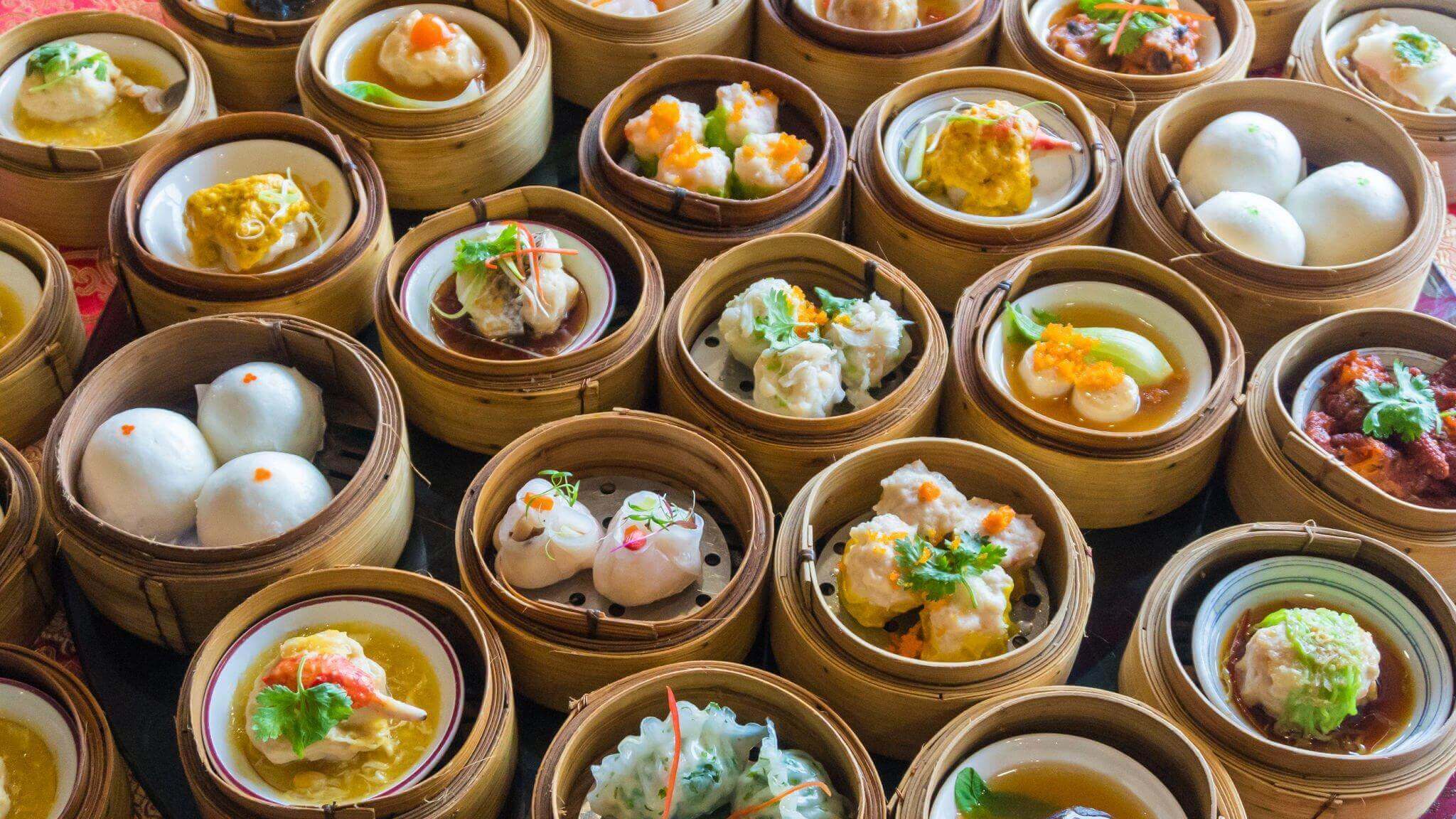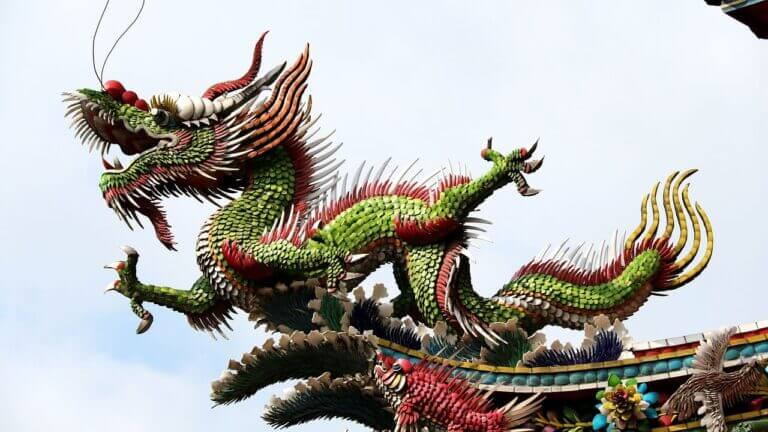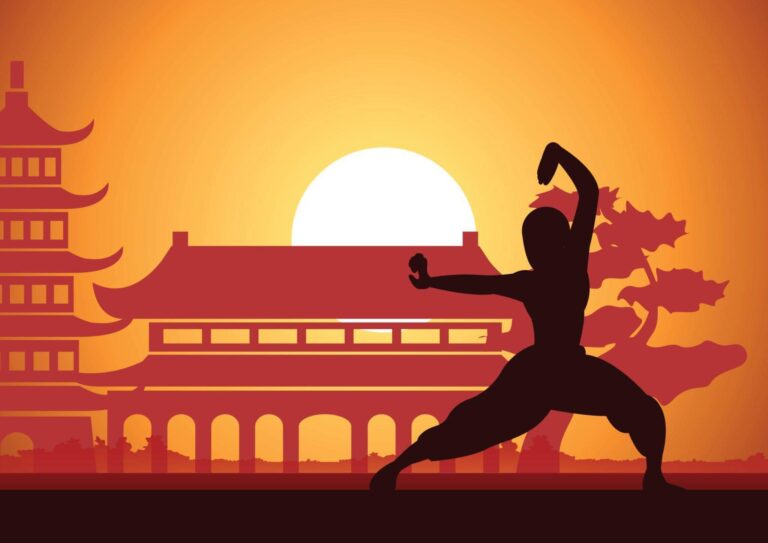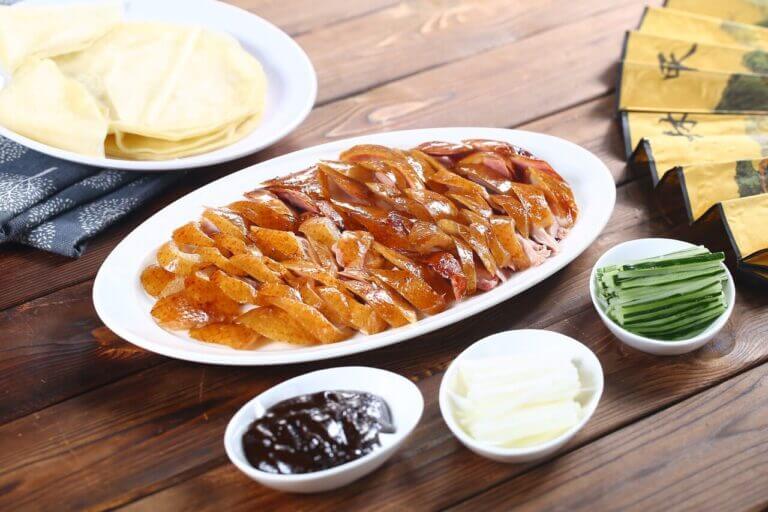List of Contents
Dim Sum is a beloved form of Chinese cuisine that has been around for over a thousand years. Originating in the southern provinces of China, it initially served as a way for travelers to refuel during their journeys. But Dim Sum has since evolved into much more than just a quick bite to eat.
In the olden days, Dim Sum was actually served as a way for merchants to sample different dishes without committing to a full meal. It was like a tasting platter for the hungry and curious! These early versions of Dim Sum consisted of simple dishes such as steamed buns filled with pork and vegetables and were served in tea houses along the trading routes.
As time went on, Dim Sum evolved into a cultural phenomenon, with endless varieties of dishes to choose from and a unique etiquette for ordering and enjoying it. Today, Dim Sum is enjoyed not only as a leisurely brunch but also as a way to gather with friends and family and celebrate special occasions.
The popularity of Dim Sum in Chinese cuisine
Chinese cuisine has been around for centuries, meaning it’s had plenty of time to perfect its flavors and techniques. It’s like a fine wine, it just gets better with age. And just like a fine wine, it’s full of complex flavors that keep you coming back for more.
Another reason for its popularity is its versatility. Chinese food can be anything from comforting to adventurous, depending on what you’re in the mood for. Need a warm bowl of noodles to soothe your soul? Check. Want to spice things up with a fiery hot pot? Double check. Chinese food has got you covered, no matter what your mood.
But let’s not forget about the presentation. Chinese food always looks as good as it tastes, with vibrant colors, intricate patterns, and beautifully arranged dishes. It’s like a work of art, but you get to eat it. Score!
Eating with friends and family is an integral part of Chinese culture, and it’s one of the reasons why Chinese food is so much fun. Sharing a big plate of dumplings or a hot pot is a great way to bond and create memories.
Varieties of Dim Sum
When it comes to dim sum, there’s no shortage of delectable delights to choose from. This traditional Chinese cuisine is all about variety, with an endless array of steamed, fried, and baked treats that are guaranteed to tantalize your taste buds. But with so many options, it can be tough to know where to start. Below are some of the starters.
1. Pork Buns
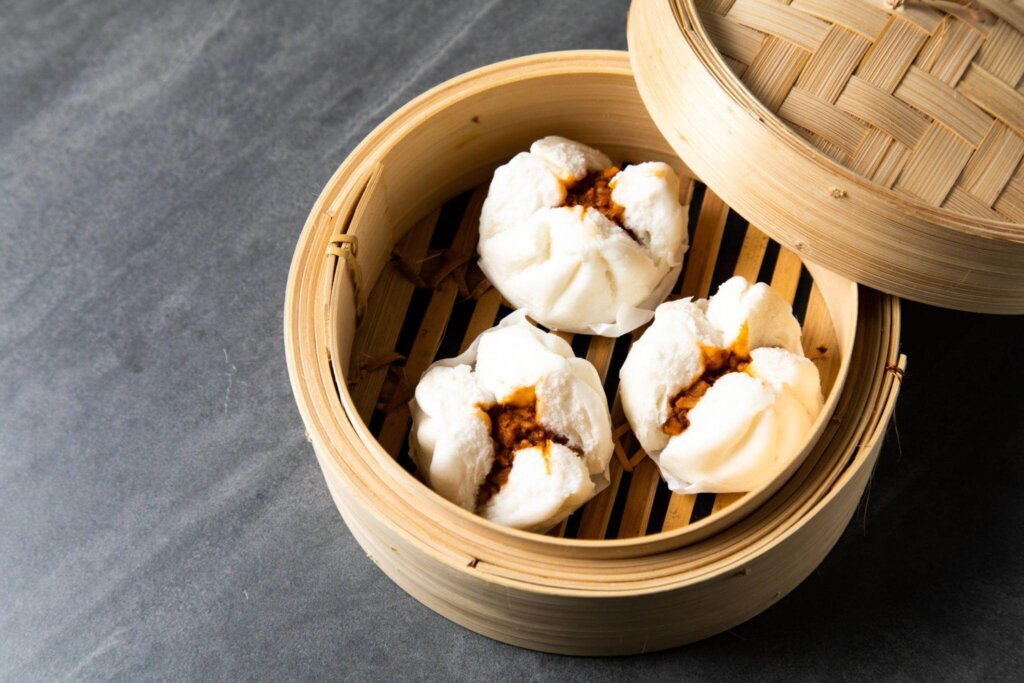
Known as Char Siu Bao in Cantonese, is a staple in Chinese cuisine, and for good reason. These fluffy steamed buns are filled with a sweet and savory filling made with roasted pork, making them the perfect combination of soft, chewy, and delicious.
The origins of pork buns can be traced back to the Song Dynasty in China when they were first mentioned in written records. Over the centuries, pork buns have evolved to become a staple in dim sum restaurants and bakeries, enjoyed by people all over the world.
The dough for pork buns is made with flour, yeast, sugar, and water, giving it a soft and chewy texture. The dough is then steamed, creating a fluffy and pillowy texture that’s perfect for holding the filling.
Pork buns are filled with char siu, a sweet and savory roasted pork that’s been marinated in a mixture of soy sauce, hoisin sauce, sugar, and spices. The pork is then roasted to perfection, creating a juicy and flavorful filling that’s the perfect complement to the soft and chewy dough.
Pork buns are typically enjoyed as a snack or light meal, and are best served warm and fresh out of the steamer. Whether you’re grabbing one on the go or sitting down for a leisurely dim sum meal, pork buns are a delicious and satisfying treat.
2. Shrimp Dumplings
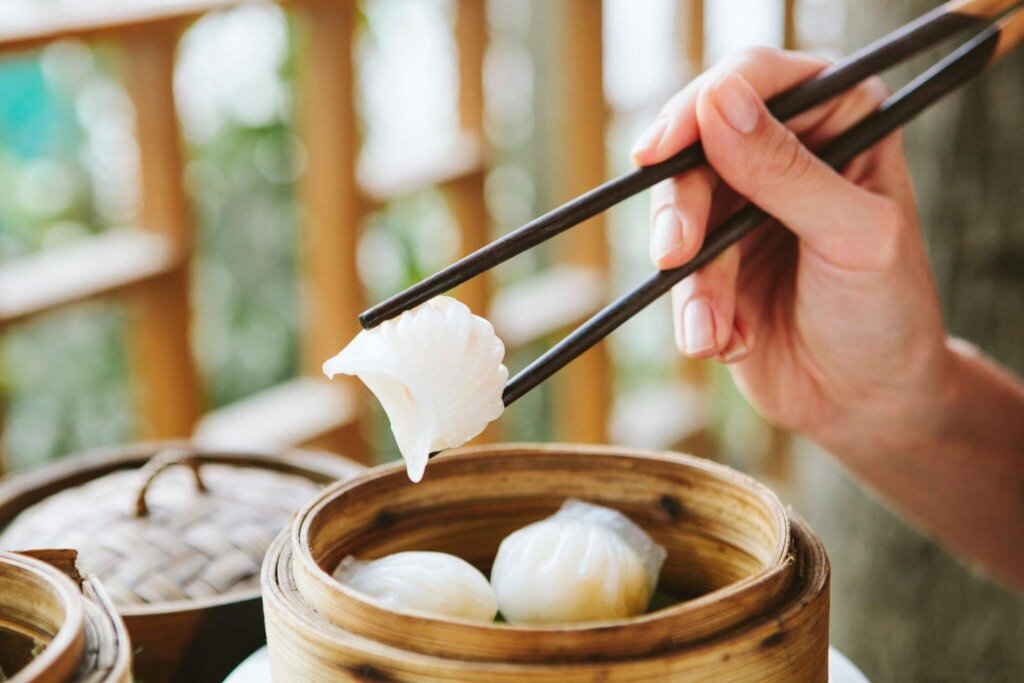
Known as Har Gow in Cantonese, are a staple in Chinese dim sum restaurants. These delicate and flavorful dumplings are filled with fresh shrimp and a mixture of seasonings, making them a seafood lover’s dream come true.
The origins of shrimp dumplings can be traced back to the Guangdong province in southern China, where they were first created as a way to preserve shrimp during the winter months. Over the centuries, shrimp dumplings have become a popular dim sum item, enjoyed by people all over the world.
The wrapper for shrimp dumplings is made with a mixture of wheat flour and water, giving it a translucent and delicate texture. The wrapper is then shaped into a round and pinched at the top, creating a pouch for the filling.
Shrimp dumplings are filled with a mixture of fresh shrimp, ginger, green onions, and seasonings. The filling is carefully wrapped in the translucent wrapper, creating a delicate and flavorful dumpling that’s the perfect combination of textures and flavors.
Shrimp dumplings are typically served steamed, with a dipping sauce on the side. The translucent wrapper and juicy filling make for a beautiful presentation, making them a popular choice for special occasions.
3. Pork and Mushroom Dumplings
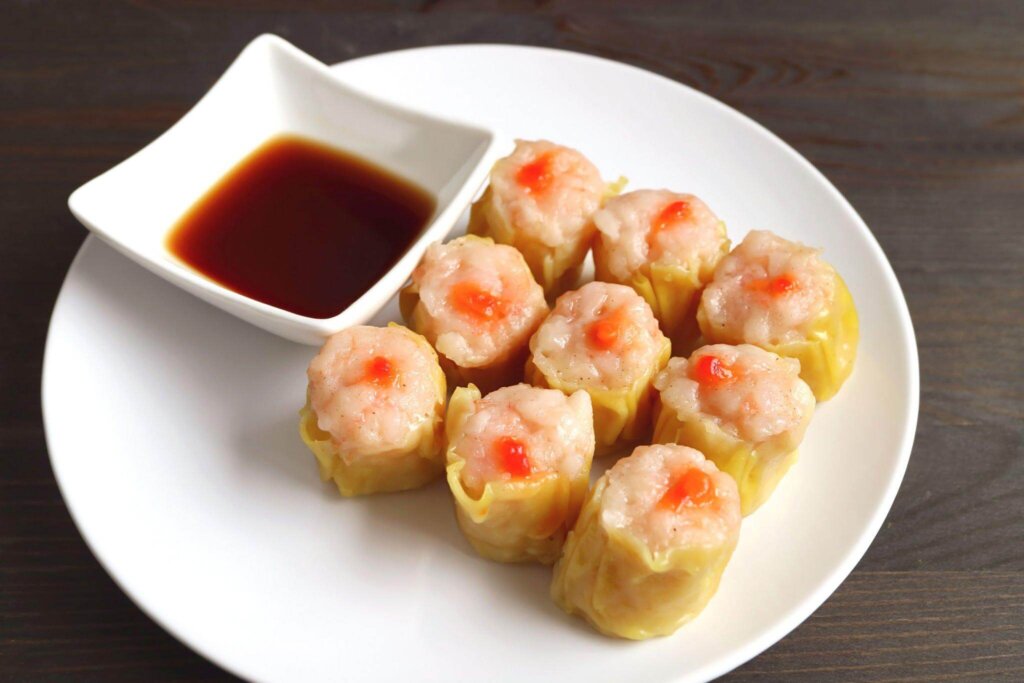
Known as Siu Mai in Cantonese, the filling for pork and mushroom dumplings is made by combining ground pork with chopped mushrooms, such as shiitake or oyster mushrooms, along with a mixture of seasonings and spices. The filling is then placed in a wonton wrapper, which is folded and pleated to create a recognizable dumpling shape.
The combination of juicy, savory pork and earthy mushrooms is a match made in heaven. The juicy pork provides a rich, meaty flavor, while the mushrooms bring an earthy, umami-rich taste. Together, they create a filling that’s both satisfying and flavorful.
The texture of pork and mushroom dumplings is another reason why they’re so loved. The tender, slightly chewy wrapper perfectly complements the juicy, savory filling, making for a delightful bite with every dumpling. The wrapper also provides a nice contrast to the juicy filling, making for a well-rounded texture that’s both tender and satisfying.
4. Rice Noodle Rolls

Known as Cheong Fun in Cantonese, are made with a mixture of rice flour and water and are filled with a variety of ingredients such as shrimp, beef, or vegetables. Whether you’re a fan of Chinese food or just looking for something new to try, rice noodle rolls are a must-have.
The origins of rice noodle rolls can be traced back to the Guangdong province in southern China, where they were first created as a way to preserve rice during the hot summer months. Over the centuries, rice noodle rolls have become a popular dim sum item, enjoyed by people all over the world.
The wrapper for rice noodle rolls is made with a mixture of rice flour and water, giving it a delicate and translucent texture. The wrapper is then steamed, creating a soft and chewy texture that’s perfect for holding the filling.
Rice noodle rolls can be filled with a variety of ingredients, such as shrimp, beef, or vegetables. The filling is carefully rolled up in the delicate wrapper, creating a beautiful and flavorful roll that’s the perfect combination of textures and flavors.
Rice noodle rolls are typically served steamed, with a sauce on the side. The delicate wrapper and flavorful filling make for a beautiful presentation, making them a popular choice for special occasions.
5. Sticky Rice with Lotus Leaf
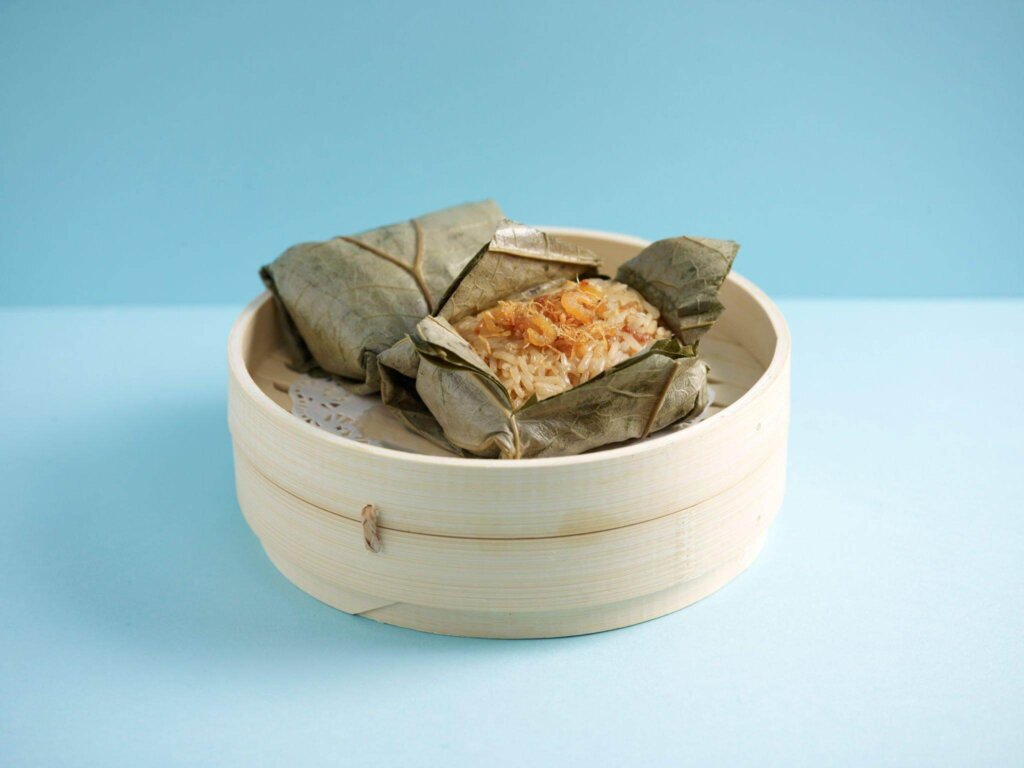
Lotus leaf sticky rice is a traditional Chinese dish that is made by wrapping sticky rice in a lotus leaf and then steaming it to perfection. The lotus leaf not only adds an earthy flavor to the dish but also helps to keep the sticky rice moist and fluffy. It’s like wrapping a delicious present for your taste buds!
But wait, there’s more! Sticky rice isn’t just plain old rice. Oh no, it’s loaded with all sorts of goodies like mushrooms, pork, and shrimp. It’s like a party in your mouth! And if you’re feeling fancy, you can even add in some abalone or scallops for a real seafood shindig.
And the best part? Lotus leaf sticky rice is a complete meal in one! No need to worry about sides or sauces, this dish has got you covered. It’s like a one-stop shop for flavor and nutrition!
The Etiquette of Ordering Dim Sum
First things first, when you sit down at a dim sum restaurant, you’ll be given a menu and a teapot. Now, the teapot is not just for decoration – it’s an important part of the dim sum experience! Fill your cups with tea, and enjoy sipping away while you peruse the menu.
Next up, it’s time to order. But hold your horses! Don’t just start shouting out your favorite dishes. Instead, wait for the servers to come by with carts of steaming hot dim sum. Take a look at what they have, and if you see something you like, simply nod your head or raise your hand to signal to the server that you’d like to order. It’s that simple!
Let’s talk about the menu. If you’re feeling overwhelmed by all the options, don’t worry. Just remember the two most important rules: never order too much, and always try something new! It’s like a culinary adventure! And if you’re feeling shy, don’t be afraid to ask the server for recommendations. They’re experts in the art of dim sum, after all.
Finally, don’t forget to be polite and patient. Dim sum restaurants can get busy, so your food might take a bit longer to arrive. But that’s all part of the fun! Sip your tea, chat with your friends, and enjoy the atmosphere. And when your food finally arrives, dive in with gusto!
The Cultural Significance of Dim Sum
One of the most notable cultural aspects of dim sum is its social nature. Traditionally, dim sum was served in tea houses as a way for people to gather and socialize. Friends and family would gather to enjoy a leisurely meal, drink tea, and catch up on the latest news. This tradition still holds true today, as dim sum remains a popular social activity in China and around the world.
Another cultural aspect of dim sum is its connection to tea culture. In ancient China, tea was considered a luxury and was often enjoyed with light snacks. Dim sum evolved from this tradition, as small, bite-sized portions of food were served alongside tea. Today, dim sum and tea remain an inseparable duo, as tea is often served alongside dim sum to cleanse the palate and enhance the overall experience.
In addition to its social and tea-related cultural significance, dim sum is also steeped in regional and historical influences. Different regions of China have their own unique dim sum dishes that reflect the local cuisine and ingredients. For example, dim sum from Guangdong (formerly Canton) often includes steamed buns filled with pork, while dim sum from Hong Kong is known for its crispy fried items.
The popularity of dim sum has also spread beyond China, with dim sum restaurants found in cities around the world. Despite its global reach, dim sum remains a beloved and integral part of Chinese culture, representing a delicious journey through history, social traditions, and regional cuisine.
Final Thoughts on Dim Sum
Dim sum is all about variety. With a wide range of steamed, fried, and baked dishes, there’s something for everyone at the dim sum table. From savory pork buns to sweet lotus seed paste-filled desserts, dim sum offers a diverse range of flavors and textures that will keep you coming back for more.
With roots in ancient tea and snack culture, dim sum is steeped in history and tradition. Whether you’re enjoying it in a traditional tea house in southern China or a modern restaurant in your local city, dim sum is a unique and tasty way to experience the cultural heritage of China.
Dim sum is a culinary experience that’s not to be missed. From its diverse range of flavors and textures to its social and cultural significance, dim sum is a delicious and memorable way to satisfy your taste buds and connect with friends and family. So next time you’re looking for a tasty meal, don’t hesitate to give dim sum a try!

